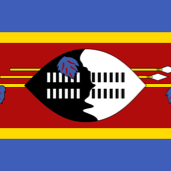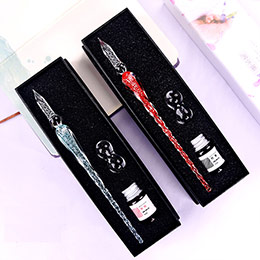4S 40A Li-ion Lithium Battery 18650 Charger PCB BMS Protection Board with Balance For Drill Motor 14.8V 16.8V Lipo Cell Module
177
Tuta Solutio

Res acceptantur intra 40 dies ab receptione. Res personalisatae non possunt reddi. Res emptae cum dono card solum commutari possunt.
Donum Gratis
Salve ad Roymall, tuum destinatum ad dona premium. Gratias agimus pro tuo auxilio, et offerimus donum gratis cum omni emptione. Paratus ad explorandum nostram collectionem? Perlege nostra selectio, fac ordinationem tuam, et expecta donum tuum gratis cum emptione.Politica Missilis
Processamus ordinationes intra 2 dies.Norma missilis tempus est 5-7 dies laboris.Tempus missilis potest variari secundum destinationem.1. Politica Reditus
Accipimus solum res emptas ex roymall.com. Donum gratis non potest reddi. Res debet esse non usata et in originali packaging.Processamus reditus intra 3-5 dies laboris post receptionem.Res personalisatae non possunt reddi.Contacta nos: service@roymall.com vel Whatsapp: +86193598494712.Politica Pecuniae Redditae
Accipies plenam pecuniam redditam post receptionem et inspectionem. Sumptus missilis non redditur.Contacta nos: service@roymall.com vel Whatsapp: +8619359849471
Feature:
4 string 16.8V 40A lithium battery protection board (comes with recovery function-AUTO Recovery)
Scope: Nominal voltage of 3.6V, 3.7V lithium battery (including 18650,26650, polymer lithium battery)
Product Size: 45 * 55 * 3.4mm (Standard Edition / Enhanced), 46 * 60 * 3.4mm (balanced version)
Product weight: 9.3g (standard / enhanced version), 10.3g (balanced version)
Charging voltage: 16.8V - 18.1V
Continuous discharge current (upper limit): 40A (if the cooling environment is not good, please reduce the load current use)
Continuous charge current (upper limit): 20A
Equalization version: suitable for starting current below 80A, power 135W below the drill.
| Project | Min. | Typ. | Max. | Units |
| Consuming current | 12 | 18 | 24 | uA |
| Overcharged protection voltage | 4.2 | 4.25 | 4.3 | V |
| Balanced starting voltage | 4.17 | 4.2 | 4.23 | V |
| Equilibrium current | 95 | 100 | 105 | mA |
| Balanced heating power | 1.56 | 1.72 | 1.91 | W |
| Overcharge recovery voltage | 4.1 | 4.15 | 4.2 | V |
| Over-discharge protection voltage | 2.4 | 2.5 | 2.6 | V |
| Overvoltage protection after over-discharge protection | 2.8 | 3 | 3.2 | V |
| Overvoltage protection after over-discharge protection | 3.2 | 3.5 | 3.8 | V |
| Over-discharge recovery voltage | 2.9 | 3.2 | 3.3 | V |
| Conduction internal resistance | 2.5 | 3 | 3.5 | mu03a9 |
| Overcurrent protection current C | 70 | 80 | 90 | A |
| Overcurrent delay time | 100 | 150 | 200 | ms |
| Continuous operating current | 0 | 40 | 40 | A |
| Continuous output power | 0 | 672 | 672 | W |
| Ambient temperature | -40 | 25 | 85 | u00b0C |
| Troubleshooting: | ||
| Fault phenomenon | Fault check and cause | The solution |
| Unable to charge | Measuring the voltage of 4 groups of batteries. when one of the battery voltages exceeds 4.25V, the protection board will activate overcharge protection. | Pair the battery pack well, do not mix the good battery and the bad battery. |
| Unable to discharge | Measuring the voltage of 4 groups of batteries. when one of the battery voltages is lower than 2.7V, the protection board will activate the over-discharge protection. | Pair the battery pack well, do not mix the good battery and the bad battery. |
| Charging/discharging failure | 0V, 4.2V, 8.4V, 12.6V, 16.8V miswired | Rewire or replace the new board (human failure, no warranty) |
| Overcharge/over-discharge failure | 0V, 4.2V, 8.4V, 12.6V, 16.8V miswired | Rewire or replace the new board (human failure, no warranty) |
| Discharge protection | Check that the battery pack has sufficient discharge capability and check that the load"s starting current exceeds the over-current protection current of the protection board. | Replace the battery pack with a higher discharge capacity, or a protective plate with a larger current (super working range) |
| Component soldering | There is no connection between one of the components and the PCB pad. | Repair welding |
| Component welding | There is a short circuit between two or more pins of the component. | Remove the component and re-weld |
| Electrostatic breakdown A | In the unpowered state, measure the G, D, and S poles of the MOSFET. If the forward and reverse resistances of any two pins are 0u03a9, it indicates that it has broken down. | Remove the replacement MOS tube |
| Electrostatic breakdown B | Remove the MOS tube and measure the resistance of the G and D, G and S poles of the MOS tube. If there is a resistance indicating that it has broken down, the resistance should be infinite. | Remove the replacement MOS tube |
Package includes:
1 x Battery Protection Board
1 x Battery Protection Board
 USD $ | United States
USD $ | United States
 GBP £ | United Kingdom
GBP £ | United Kingdom
 HKD HK$ | Hong Kong
HKD HK$ | Hong Kong
 CNY ¥ | China
CNY ¥ | China
 JPY ¥ | Japan
JPY ¥ | Japan
 EUR € | Euro
EUR € | Euro
 SBD SI$ | Solomon Islands
SBD SI$ | Solomon Islands
 PGK K | Papua New Guinea
PGK K | Papua New Guinea
 THB ฿ | Thailand
THB ฿ | Thailand
 ILS ₪ | Israel
ILS ₪ | Israel
 VND ₫ | Vietnam
VND ₫ | Vietnam
 MGA Ar | Madagascar
MGA Ar | Madagascar
 XAG | Silver
XAG | Silver
 IDR Rp | Indonesia
IDR Rp | Indonesia
 HTG G | Haiti
HTG G | Haiti
 PHP ₱ | Philippines
PHP ₱ | Philippines
 MXN $ | Mexico
MXN $ | Mexico
 WST WS$ | Samoa
WST WS$ | Samoa
 CAD $ | Canada
CAD $ | Canada
 LSL L | Lesotho
LSL L | Lesotho
 BWP P | Botswana
BWP P | Botswana
 KRW ₩ | South Korea
KRW ₩ | South Korea
 KWD د.ك | Kuwait
KWD د.ك | Kuwait
 LAK ₭ | Laos
LAK ₭ | Laos
 LKR Rs | Sri Lanka
LKR Rs | Sri Lanka
 TRY ₺ | Turkey
TRY ₺ | Turkey
 PKR Rs | Pakistan
PKR Rs | Pakistan
 CHF Fr | Switzerland
CHF Fr | Switzerland
 PLN zł | Poland
PLN zł | Poland
 QAR ر.ق | Qatar
QAR ر.ق | Qatar
 NAD N$ | Namibia
NAD N$ | Namibia
 MOP MOP$ | Macau
MOP MOP$ | Macau
 EGP ج.م | Egypt
EGP ج.م | Egypt
 MWK MK | Malawi
MWK MK | Malawi
 VES Bs.S | Venezuela
VES Bs.S | Venezuela
 ECS S/ | Ecuador
ECS S/ | Ecuador
 OMR ر.ع. | Oman
OMR ر.ع. | Oman
 XDR | IMF
XDR | IMF
 LTL Lt | Lithuania
LTL Lt | Lithuania
 TJS SM | Tajikistan
TJS SM | Tajikistan
 BBD Bds$ | Barbados
BBD Bds$ | Barbados
 BRL R$ | Brazil
BRL R$ | Brazil
 BZD BZ$ | Belize
BZD BZ$ | Belize
 CRC ₡ | Costa Rica
CRC ₡ | Costa Rica
 IRR ﷼ | Iran
IRR ﷼ | Iran
 AED د.إ | United Arab Emirates
AED د.إ | United Arab Emirates
 PAB B/ | Panama
PAB B/ | Panama
 VUV VT | Vanuatu
VUV VT | Vanuatu
 DOP RD$ | Dominican Republic
DOP RD$ | Dominican Republic
 XOF CFA | West Africa
XOF CFA | West Africa
 AWG ƒ | Aruba
AWG ƒ | Aruba
 YER ﷼ | Yemen
YER ﷼ | Yemen
 XCD EC$ | East Caribbean
XCD EC$ | East Caribbean
 GHS GH₵ | Ghana
GHS GH₵ | Ghana
 BDT ৳ | Bangladesh
BDT ৳ | Bangladesh
 SRD $ | Suriname
SRD $ | Suriname
 GMD D | Gambia
GMD D | Gambia
 MVR Rf | Maldives
MVR Rf | Maldives
 SVC $ | El Salvador
SVC $ | El Salvador
 BND B$ | Brunei
BND B$ | Brunei
 GIP £ | Gibraltar
GIP £ | Gibraltar
 SHP £ | Saint Helena
SHP £ | Saint Helena
 GTQ Q | Guatemala
GTQ Q | Guatemala
 AFN ؋ | Afghanistan
AFN ؋ | Afghanistan
 IQD ع.د | Iraq
IQD ع.د | Iraq
 AZN ₼ | Azerbaijan
AZN ₼ | Azerbaijan
 JOD د.ا | Jordan
JOD د.ا | Jordan
 CLP $ | Chile
CLP $ | Chile
 BHD .د.ب | Bahrain
BHD .د.ب | Bahrain
 NIO C$ | Nicaragua
NIO C$ | Nicaragua
 NGN ₦ | Nigeria
NGN ₦ | Nigeria
 UZS so'm | Uzbekistan
UZS so'm | Uzbekistan
 ERN Nfk | Eritrea
ERN Nfk | Eritrea
 ANG ƒ | Netherlands
ANG ƒ | Netherlands
 KYD CI$ | Cayman Islands
KYD CI$ | Cayman Islands
 SYP £S | Syria
SYP £S | Syria
 SDG ج.س. | Sudan
SDG ج.س. | Sudan
 LBP ل.ل | Lebanon
LBP ل.ل | Lebanon
 HNL L | Honduras
HNL L | Honduras
 DJF Fdj | Djibouti
DJF Fdj | Djibouti
 TTD TT$ | Trinidad and Tobago
TTD TT$ | Trinidad and Tobago
 KHR ៛ | Cambodia
KHR ៛ | Cambodia
 AOA Kz | Angola
AOA Kz | Angola
 RWF FRw | Rwanda
RWF FRw | Rwanda
 GNF FG | Guinea
GNF FG | Guinea
 GEL ₾ | Georgia
GEL ₾ | Georgia
 FKP £ | Falkland Islands
FKP £ | Falkland Islands
 BOB Bs. | Bolivia
BOB Bs. | Bolivia
 CDF FC | Congo
CDF FC | Congo
 ETB Br | Ethiopia
ETB Br | Ethiopia
 LRD L$ | Liberia
LRD L$ | Liberia
 SOS Sh | Mali
SOS Sh | Mali
 DZD دج | Algeria
DZD دج | Algeria
 BIF FBu | Burundi
BIF FBu | Burundi
 SAR ر.س | Saudi Arabia
SAR ر.س | Saudi Arabia
 UYU $U | Uruguay
UYU $U | Uruguay
 UGX USh | Uganda
UGX USh | Uganda
 AMD ֏ | Armenia
AMD ֏ | Armenia
 MDL L | Moldova
MDL L | Moldova
 SGD S$ | Singapore
SGD S$ | Singapore
 LYD ل.د | Libya
LYD ل.د | Libya
 MAD د.م. | Morocco
MAD د.م. | Morocco
 ZAR R | South Africa
ZAR R | South Africa
 TWD NT$ | Taiwan
TWD NT$ | Taiwan
 HUF Ft | Hungary
HUF Ft | Hungary
 XAF CFA | Central Africa
XAF CFA | Central Africa
 SEK kr | Sweden
SEK kr | Sweden
 RON lei | Romania
RON lei | Romania
 FJD FJ$ | Fiji
FJD FJ$ | Fiji
 DKK kr | Denmark
DKK kr | Denmark
 CVE $ | Cape Verde
CVE $ | Cape Verde
 RSD din | Serbia
RSD din | Serbia
 ISK kr | Iceland
ISK kr | Iceland
 MZN MT | Mozambique
MZN MT | Mozambique
 ALL L | Albania
ALL L | Albania
 BGN лв | Bulgaria
BGN лв | Bulgaria
 BAM KM | Bosnia and Herzegovina
BAM KM | Bosnia and Herzegovina
 XPF F | Pacific
XPF F | Pacific
 TND د.ت | Tunisia
TND د.ت | Tunisia
 JMD J$ | Jamaica
JMD J$ | Jamaica
 CNH ¥ | China
CNH ¥ | China
 CZK Kč | Czech Republic
CZK Kč | Czech Republic
 SZL E | Eswatini
SZL E | Eswatini
 AUD $ | Australia
AUD $ | Australia
 NOK kr | Norway
NOK kr | Norway
 KES KSh | Kenya
KES KSh | Kenya
 NZD $ | New Zealand
NZD $ | New Zealand
 MNT ₮ | Mongolia
MNT ₮ | Mongolia
 RUB ₽ | Russia
RUB ₽ | Russia
 KZT ₸ | Kazakhstan
KZT ₸ | Kazakhstan
 XAU | Gold
XAU | Gold
 KGS с | Kyrgyzstan
KGS с | Kyrgyzstan
 INR ₹ | India
INR ₹ | India
 NPR रू | Nepal
NPR रू | Nepal
 TOP T$ | Tonga
TOP T$ | Tonga
 ETH Ξ | Ethereum
ETH Ξ | Ethereum
 SCR ₨ | Seychelles
SCR ₨ | Seychelles



 Direct purchase from the factory
Direct purchase from the factory 








































































